 BREAKING: Ola Roadster X Electric Bike Lineup Launched In India
BREAKING: Ola Roadster X Electric Bike Lineup Launched In India
 Ola S1 X+ Gen 3 Launched: Highlights In 10 Images
Ola S1 X+ Gen 3 Launched: Highlights In 10 Images

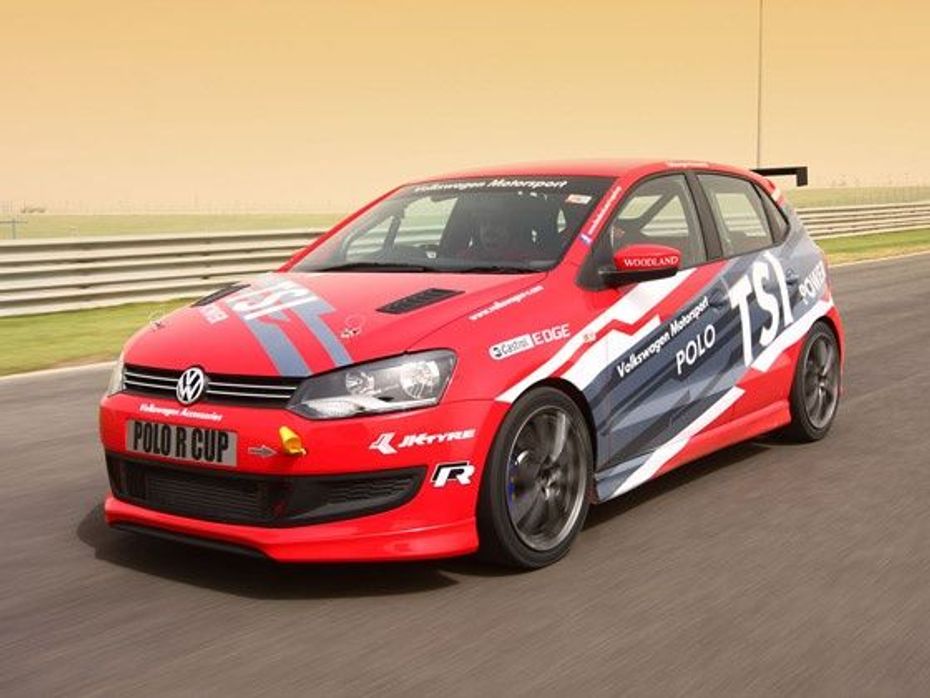
There are some memories that even the most ardent and adventurous of petrolheads will never forget. Driving on an international-standard Formula 1 circuit is definitely one of them. The racetrack in question is none other than the fabulous Buddh International Circuit and the petrolhead in question is none other than yours truly. But this is not a story about either track or man, it is about the machine that made the day not just unforgettable, but absolutely hand-on-heart, one of the best experiences of my life, ever! This is the story of the 2012 Volkswagen Polo R Cup racer car, a formidable machine that is set to take racing standards to a whole new level in India.
Now last year, I had the opportunity to not just drive, but also race the VW Polo R Cup car (2nd generation) in a media race at the Kari Motor Speedway in Coimbatore. That experience itself had been rather remarkable – a 130-odd bhp diesel car in full race trim is exciting at the very least. But exciting as it was, everyone who had driven the car over the last two seasons, at least the journalists, kept saying that VW should really get in the TFSI petrol engine on this track blitzer because, let’s face it, petrol engines are more exciting, especially at this level of racing. Luckily the wait for this change didn’t take too long as it seems VW Motorsport too was thinking along the same lines and has gone ahead and announced that the 2012 edition of the car will run with a 1.4-litre TFSI petrol engine mated to a six-speed DSG dual-clutch transmission as opposed to the six-speed manual on the 2nd generation Polo R Cup car.
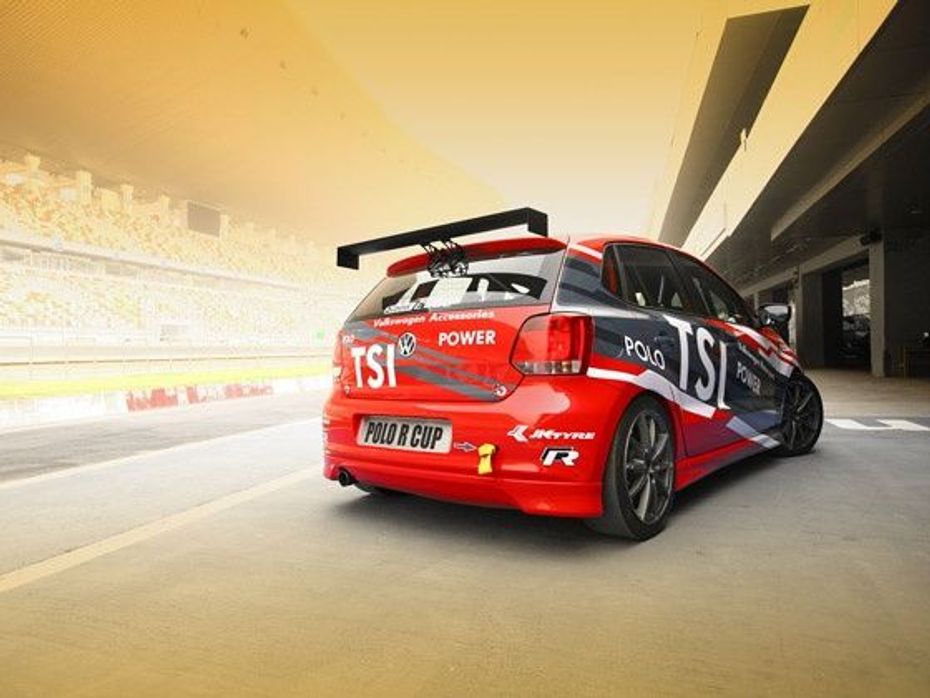
Of course, VW’s reason for going with this setup has more to do with the fact that this new racecar is more in tune with the type of cars that the young Indian racers can expect if they graduate to the VW Scirocco-R Cup or any other form of Touring Car racing in Europe. The bottom line is that the young racers looking at building their career in motorsport will profit from this change as their skill-sets will address a more international appeal. Regardless, the chance to test out this new car on the Buddh International Circuit was really one to not miss, however, before I get talking about the experience behind the wheel of this ultra hot hatch and doing laps on the track, it is important to understand the vehicle in question first.
This year’s Polo Cup car boasts of pedigree. Though it is still based on the Polo like its predecessors, the new car doesn’t look like a juvenile effort at building a race car; rather the execution to its build speaks of professionalism down to the last detail. Major visual changes to the car include a large spoiler mounted at the very top of the boot lid. Constructed out of lightweight material, the spoiler has a bigger role to play this season as speeds are going to be higher and all the aerodynamic assistance that the driver can get will only benefit their abilities.
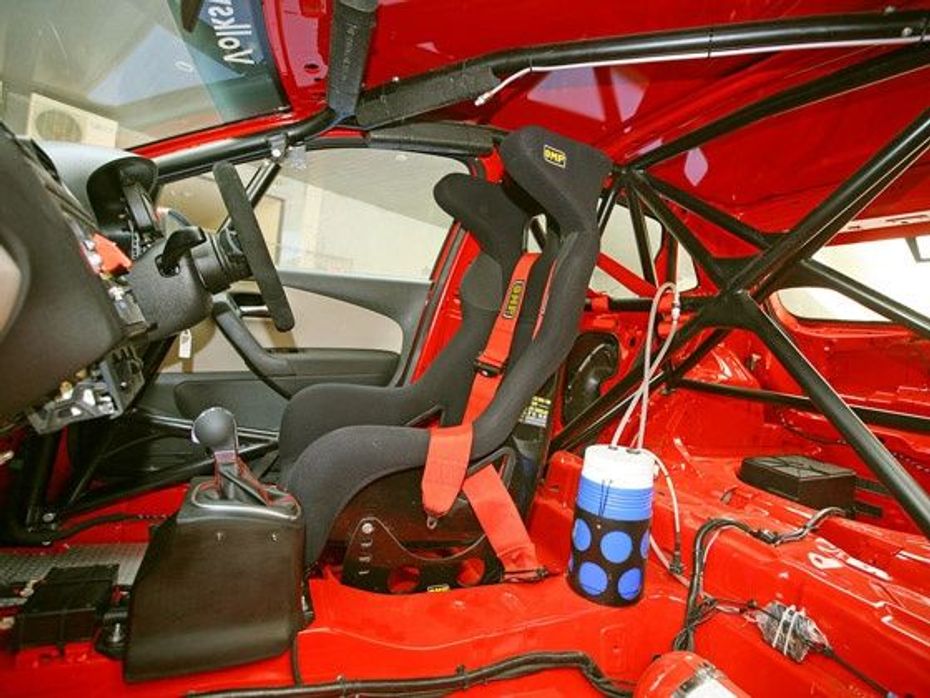
Gone are the indented hood intakes, replaced instead by plastic grilles on either side of the hood. On closer inspection to the front wheels, you’ll notice that the vehicle houses a much larger set of brake discs, so it wouldn’t be a far stretch of imagination to think that this car would stop on a dime. The interiors haven’t changed much in terms of layout and the only striking difference is the automatic gear selector for the DSG gearbox. By going automatic, VW has been able to achieve two things, namely, the inclusion of paddle shifters behind the steering wheel and the exclusion of a clutch pedal. .
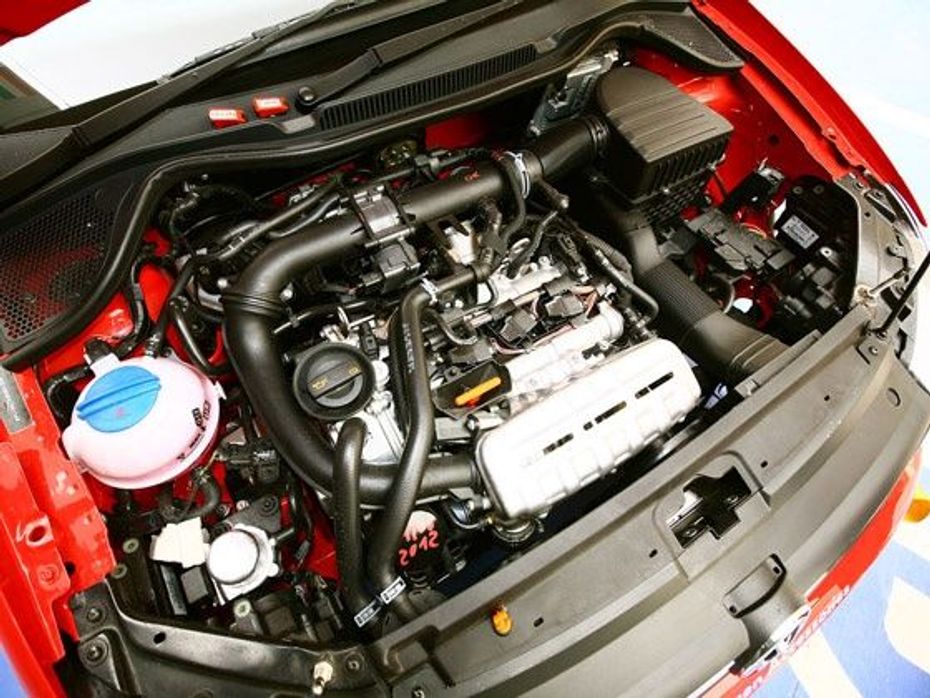
Under the hood is a whole different story. Gone is the 1.6-litre TDI unit that produced 130-odd horsepower. In its place is a cutting edge 1.4-litre direct injection petrol motor that features a twincharger – a unique combination of a turbocharger and a supercharger. This means that the front wheels are now fed 180 horsepower through the new DSG box. To make it easier to handle all that extra power around the bends, the Cup car now also features a limited slip differential as well as traction control. The bigger brakes also get some support with ABS, which means that racers can now brake much deeper into turns without fear of a lock-up.
Turn the key, and immediately it becomes apparent how different this car is from last year. While it still vibrates and roars with that typical race car feel, the massive vibes from the diesel unit are missing and there is a distinct feeling of refinement. Put your foot down though, and that exhaust sings a brilliant note that can easily make the previous year’s car fume with jealousy – something that was made amply clear when blasting down the start-finish straight at the BIC with the noise echoing off the grandstand. I will add that if you go pedal to the metal, this car moves like a bat out of hell too. The boffins at VW Motorsport have also played an interesting trick with the DSG gearbox.
Stick it in D, and the car will only shift gears using the pedal shifters. Rev it all the way up in a single gear, and it’ll happily keep bouncing off the redline. Put it in S however, and it becomes fully automatic, though the engine will happily hold revs through the corners and only upshift a little short of the redline. The only really problem the gearbox suffers from is the fact that there is barely any immediacy in the downshifts, even when you pull the left paddle with enough RPM to spare for the car to blip the throttle. I don’t know what the driver’s will choose while competing, but I found that the car performs amazingly well in the sports mode- ‘S’.
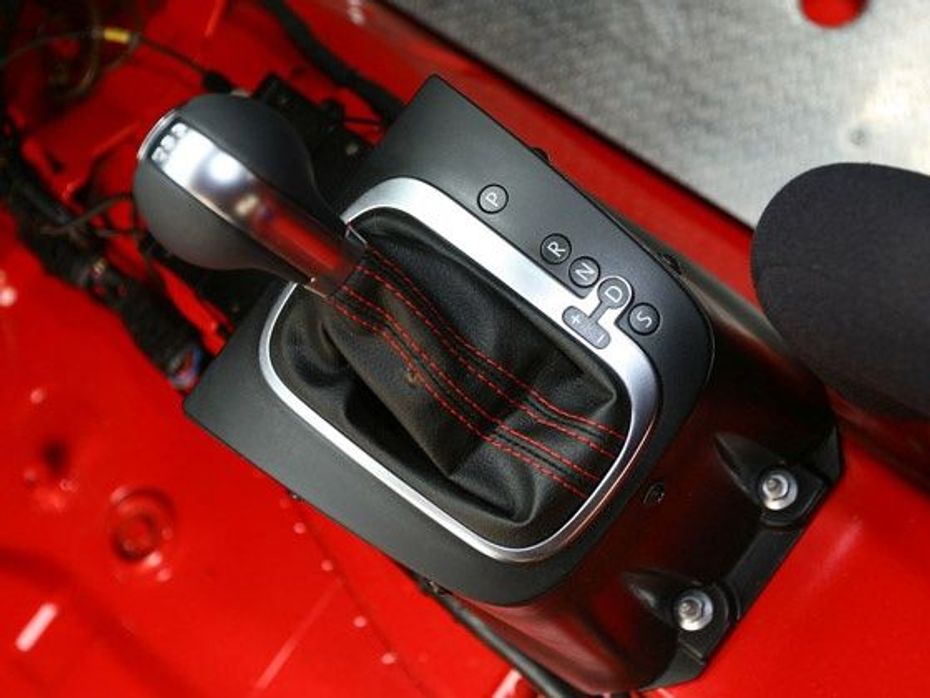
Down the back straight, the new TSI Race Polo really bared its teeth by crossing the 200km/h mark (on the speedo at least) before one needed to hit the brakes for the upcoming right hander. But even slamming the brakes could be done with great impunity as the ABS kicked in at the right moment, slowing the car to about 80km/h in an unimaginably short distance. With the need for speed addressed, VW Motorsport has ensured that the new car can be hustled through corners as well, and thanks to the limited slip differential and traction control even a novice like me could push the vehicle to the limit on corners and take a few of them at 3 digit speeds with élan.
Volkswagen Motorsport had done a brilliant job of also arranging for a few TDI Race Polos from last year to drive on the circuit along with the new TSI models. And driving both the cars back to back was nothing short of an eye-opening experience. The TDI required constant fine inputs on all fronts – steering, brake and throttle, to keep it balanced through the corners and didn’t even stand a chance against the TSI in the straights and corner exits. And the TSI also has another ace up its sleeve – launch control. At the race start, just keep your left foot firmly on the brakes and keep the throttle pedal depressed to the floor with your right. The car holds the revs at 3,700rpm and when you take your foot of the brake, it automatically shifts and puts the power down in such a way that you have the best possible acceleration off the line with as little wheelspin as possible.
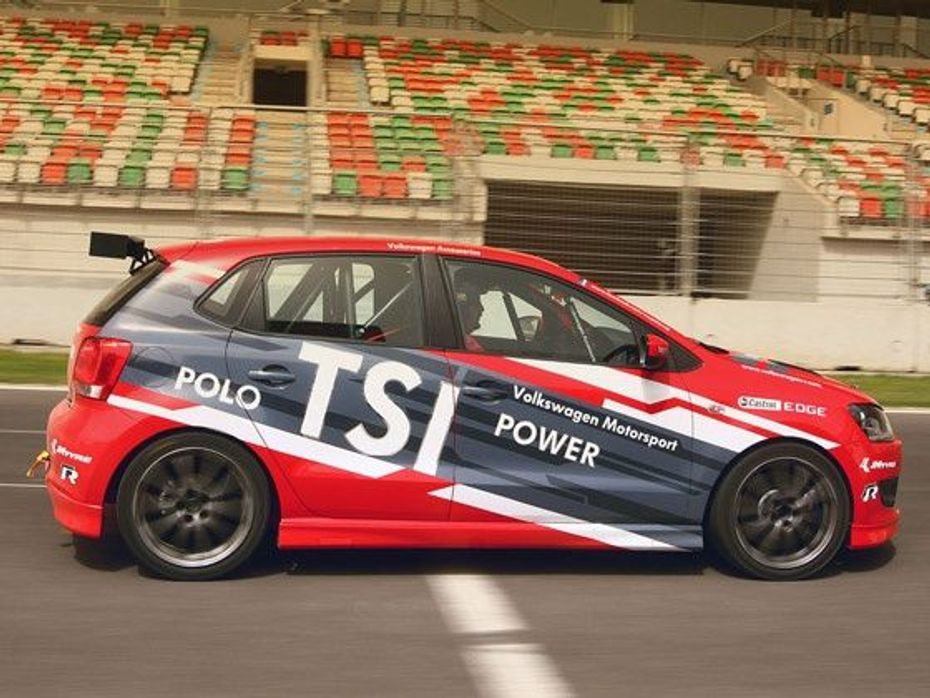
From a driver’s stand point, the TDI keeps you on your toes and there is no scope for error. The car is temperamental and easily steps out of line under hard braking or fast cornering. While the TSI model took corners with ease, the amount of driver input required to copy that same line in the TDI model was just monumental and more often then not resulted in losing control and spinning off the track. The TSI is amazingly easy to drive in comparison and while it does take away from the romantic notion of racing, it’s a car that is cutting edge, faster and more able in all manners.
In fact it ends up feeling like a ‘video game car’ that will go wherever you point it to. While the TDI version felt more engaging, the TSI race car will usher in a fresh new level excitement into the championship as winning would probably come down to the better racer rather than just the better driver. However, that is a different story that will unfold once the 2012 Polo Cup kicks off at the beginning of July in Coimbatore, but for now, I am just going to indulge in the memories of having spent a great day behind the wheel of a fantastic race car out on the Buddh International Circuit.
India's largest automotive community
 MG Astor First Drive Review: Standing Out In Style
MG Astor First Drive Review: Standing Out In Style
 2021 Mahindra XUV700: First Drive Review
2021 Mahindra XUV700: First Drive Review
 Kia Sonet Driven: More Than Just A Great Brochure?
Kia Sonet Driven: More Than Just A Great Brochure?
 Kia Syros
Rs. 8.99 Lakh
Kia Syros
Rs. 8.99 Lakh
 Vayve Mobility Eva
Rs. 3.25 Lakh
Vayve Mobility Eva
Rs. 3.25 Lakh
 BMW X3
Rs. 75.80 Lakh
BMW X3
Rs. 75.80 Lakh
 Hyundai Creta Electric
Rs. 17.99 Lakh
Hyundai Creta Electric
Rs. 17.99 Lakh
 Lotus Emira
Rs. 3.22 Crore
Lotus Emira
Rs. 3.22 Crore